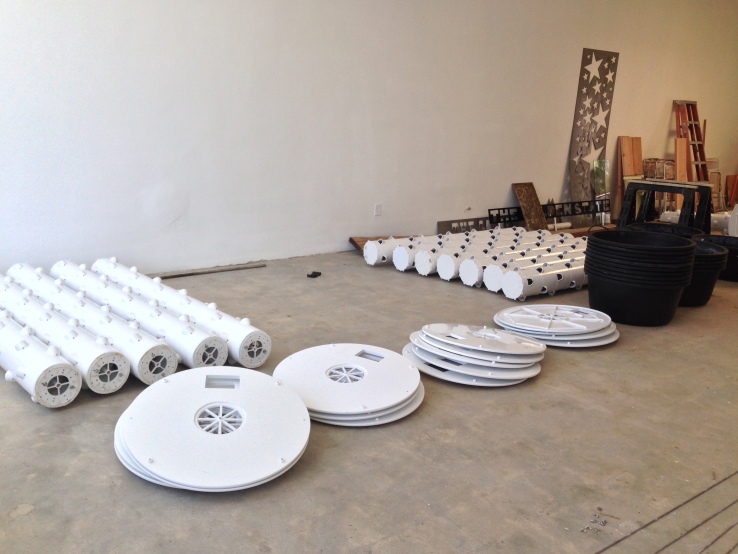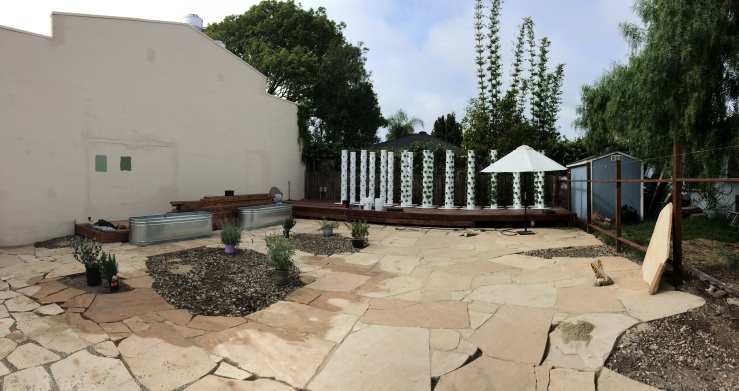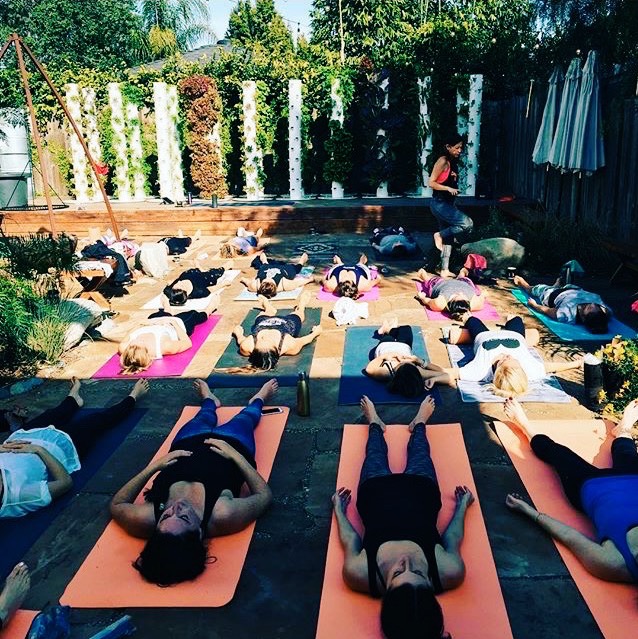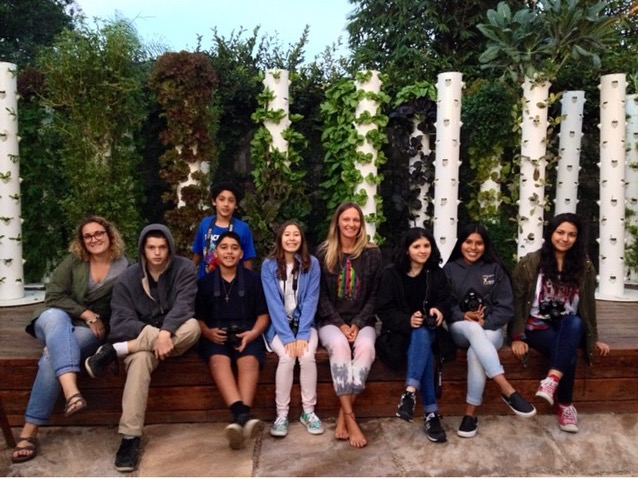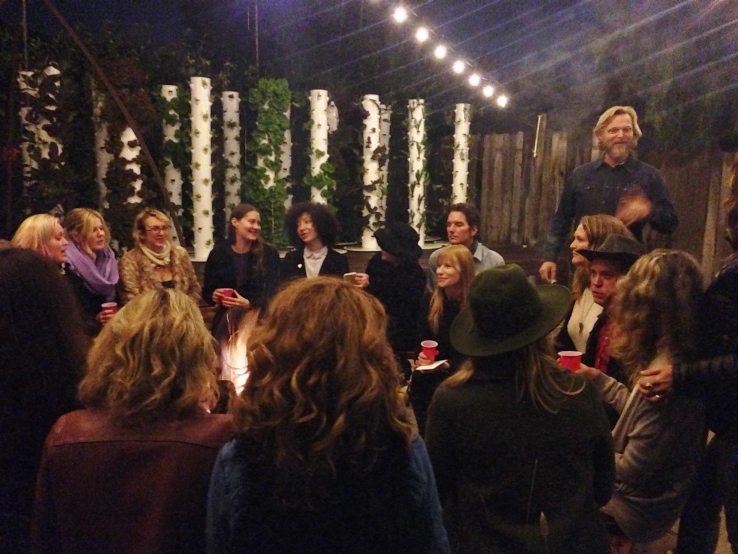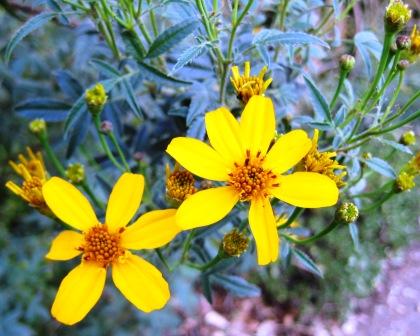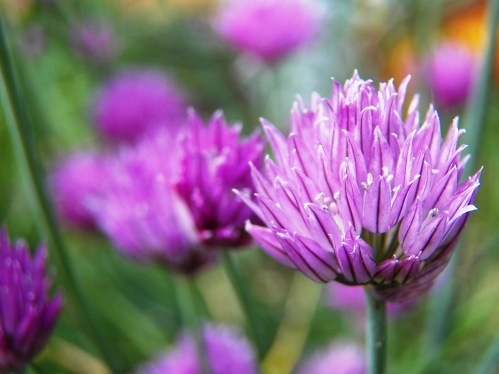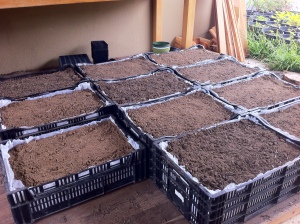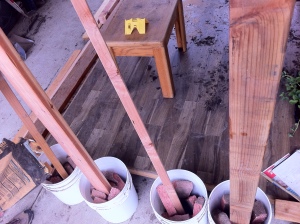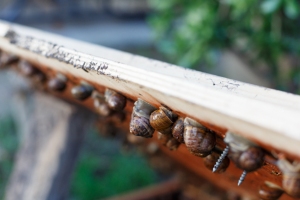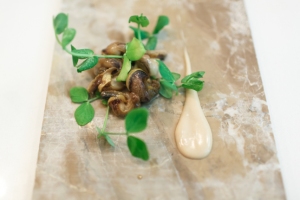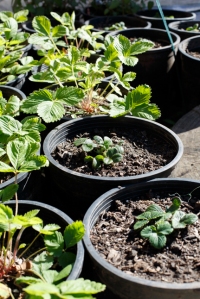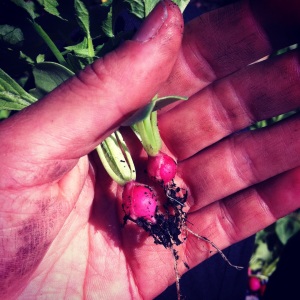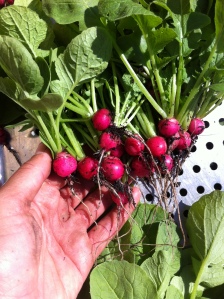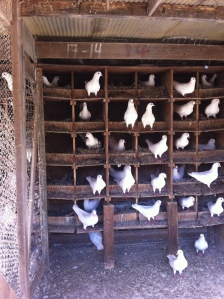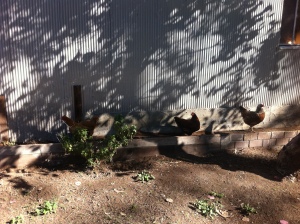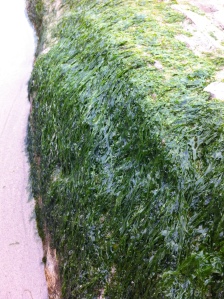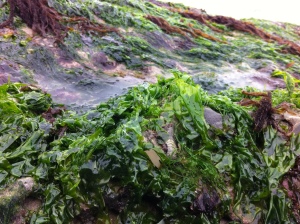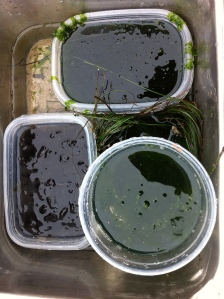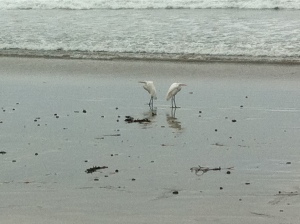Credit: Willy Blackmore
A Los Angeles restaurant is turning to a front-yard garden for its vegetables—and some slow-food protein too.

Snails have an ignoble reputation in America: Not only are they pests, but invasive ones at that. Helix aspera’s leaf-munching presence in gardens and farms around the country is an irritating legacy of France’s less easily understood culinary mores (see also: horse, frog’s legs, ortolan).
But if you’re in the restaurant business, faced with the choice of either serving imported snails or paying as much as $30 per pound for their domestic counterparts, the supposed backyard pest can quickly turn into a welcome friend.
So alongside the fava beans, radishes and beets Courtney Guerra tends at her Flower Avenue Garden in Venice, CA, are snails. And they’re there by design.
Guerra, 32 years old, is tanned and blonde, looking more like a Venice surfer than anyone you might peg as a farmer. Her working attire veers more toward Lululemon gear rather than anything cut from ochre duck canvas. She started the Flower Avenue Garden back in January, when she moved to Venice after working in the rarefied world of Napa Valley restaurants.
After graduating from the Culinary Institute of America and cooking for a private caterer, Guerra worked with Christine Kim, the head gardener at Meadowood, in St. Helena. Kim oversees a half-acre of crops, an apiary, hen house and a herd of goats for the three-Michelin star restaurant. Guerra’s hope is to adapt that kind of operation to the city, building gardens dedicated to supplying restaurants with produce and other products, like those snails.
“That’s been the reason why I really moved down here in the first place,” Guerra tells me as we walk among the beds of turnips, fava beans and obscure greens like New Zealand spinach and ice lettuce. “I really fell in love with farming, but then it was like, OK, if we want to reform our food system in any way, we have to think of alternative ways to get our food. Because what we have going on right now pretty much everyone can agree is not working. So, I was like, I’m not one to turn down a challenge, so let’s do this in L.A.”
The snails are picked off the branches of a friend’s organic cherimoya orchard in Santa Barbara, where they’re very much unwelcome. After driving them south, Guerra places them in a muddy, subterranean box, about four-foot square, where they feed on radishes, turnips and greens. Twice a week, Guerra swings open the plywood lid, casting daylight down on the slow, sliming packs, and plucks out 50 or so specimens. Those snails are starved for a few days, which purges their slimy bodies of any gritty dirt they’ve sucked up, before they travel 15 miles east, to Alma, a Downtown L.A. restaurant run by chef-owner Ari Taymor.
Taymor, 27, grew up in the Bay Area, and the scent memories of the chaparral and redwoods are a major influence in his cooking—his is a culinary effort to distill California onto a plate. So it’s no wonder that it was a meal at Chez Panisse that pushed him toward a career in the kitchen, andAlice Waters’ local-food ethos has influenced his own cooking philosophy.
Before opening Alma last year, Taymor had his own experience working with a traditional restaurant-garden setup. In 2010, he spent six months working at La Chassagnette, a Michelin-starred restaurant in Southern France’s Camargue, just outside of Arles. But Alma, which sits next door to a hostess dance club, where patrons pay women by the minute for grope-y turns around the dance floor, is substantially removed from the rural swamps of Provence, where, like Napa, agriculture is a common industry.
For Taymor and Ashleigh Parsons, Alma’s co-owner and general manager, the business is something more than a restaurant—it’s a means of being involved in a community, a lofty ideal that’s exemplified by the health and wellness after-school program they run at two nearby schools, both of which serve students who live in neighborhoods underserved by grocery stores. And while Guerra’s business may be about growing esoteric ingredients like buckwheat sprouts and caraway greens for chefs, she also sees the garden as a way to show the potential for an urban space to grow food.
Taymor says it was the impressive produce from Flower Avenue that sold him on working with Guerra, and she similarly felt that the Alma kitchen staff would treat her painstakingly raised vegetables appropriately. But it would appear that chef and gardener make excellent partners on a level that goes beyond what’s in the dirt and what’s on the plate; both think in big, somewhat didactic terms, and they strive to run businesses that do more than make money—they want to feed, to inspire.
“It was actually like dirt with a futon frame in the front and bikes in the back. It was just a bunch of bachelors who lived here,” Guerra says of the one-story Venice bungalow she moved into at the beginning of the year. She broke ground on January 4, digging up the front yard, mixing in manure, compost, and a truckload of soil hauled down from the cherimoya orchard. And she’s working with good dirt to start with, judging by the area’s history. “The land here in Venice was actually an old bean farm,” Guerra says she learned from a neighbor. “Before all of these housing tracts went in there, it was all beans.”
Simple two-by-six frames hem in the crops in the front yard of the corner lot; a tall magnolia tree casts a patch of shade over a portion of the garden, which Guerra is learning to take advantage of, planting lettuces and agretti, a coastal succulent with a snappy, salty bite, around its base. Save the variety and density of what’s growing there, Guerra’s yard isn’t much different from the other yards on the street—or the millions of other plots Angelenos choose to fill with roses, bougainvillea, succulents or California poppies.
“You could have half of the stuff that I have coming out of this garden and you and your neighbors would be lousy with vegetables,” Guerra tells me as we stand in her backyard, where I can see her neighbor picking lemons off a tree on the other side of a low stucco wall. His citrus might not be destined for a restaurant that Jonathan Gold raved about in the Los Angeles Times, but he’s quietly practicing part of what Guerra’s preaching. “I think that says a lot about what kind of power you can hold in terms of what role you can play in your food system. Basically, you should be buying meat, dairy and grains from a grocery store. Everything else you can provide for yourself.”
Taymor and his kitchen staff are prepping for dinner service when I speak to him about working with Flower Avenue. He moves between the stove and a cutting board, charring and chopping strawberries he then purées in a blender, listing the ingredients from Venice that are featured on the menu that night as he works. “We’re using her radishes, her turnips, some of her carrots, we’re for sure using her snails, we’re using a bunch of different greens.”
“We’re starting to see what the potential volume is” for produce from Flower Avenue, Taymor says. “The goal, at first, is to have the tasting menu be exclusively out of the garden, and then, from there, to move the menu toward that if we can get a bigger garden.”
And that’s the perennial challenge of re-envisioning Napa and the Camargue in the Southern California sprawl. Yards may be common, but a few continuous acres are hard to come by. Walking through Guerra’s greenhouse, the metal racks packed with two-by-two dirt squares of cucumber, squash, basil and fennel seedlings, it becomes clear that what is essentially a very ambitious home garden is only one step toward a self-sustaining restaurant.
“I kind of knew going into it that this would be an issue, obviously,” Guerra admits as she walks by one of the last unplanted pieces of dirt on the property, a small, oddly shaped patch that will soon be blanketed with herbs. “I’m already running out of room or have run out of room, actually. And that’s really frustrating for me because I can’t give chef a really nice bulk harvest of broccoli.”
“As much as I love it, I sometimes see limitations in terms of scope and scale and water and stuff like that,” Taymor acknowledges. “But we really want to be embedded in the community, and to be embedded in the community in this way, to actually have a place where people can see where our food comes from and to participate in it, it makes a big difference.”


